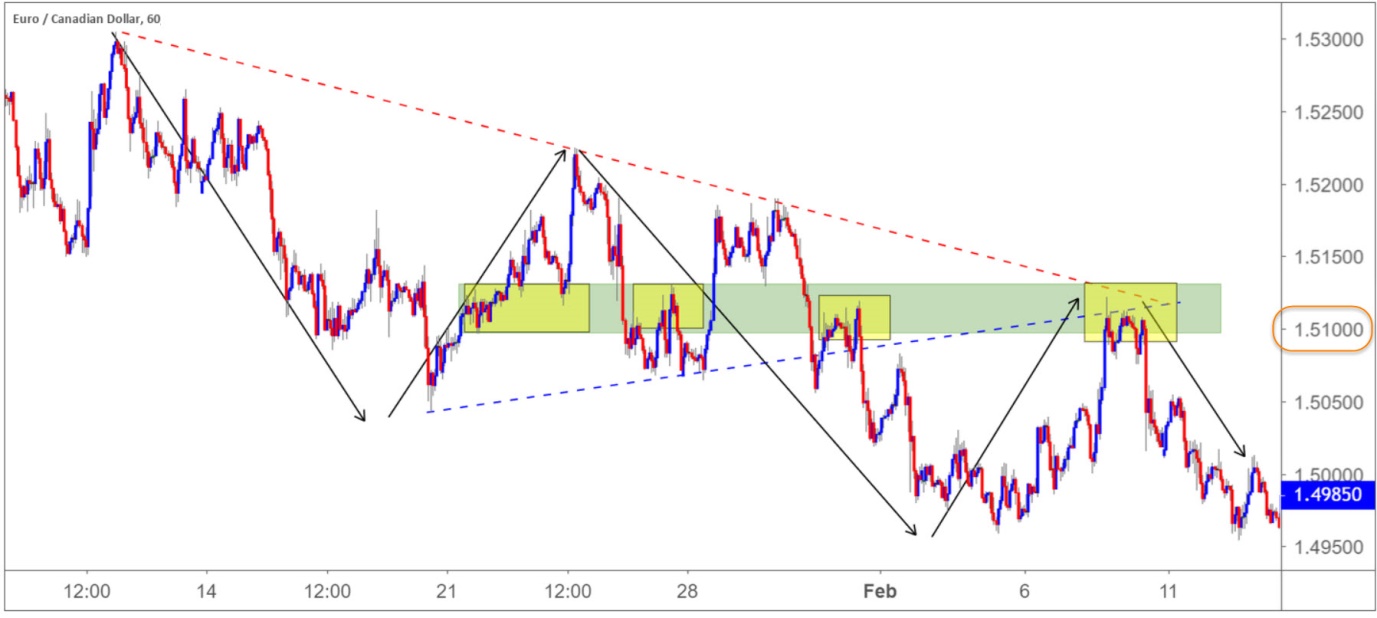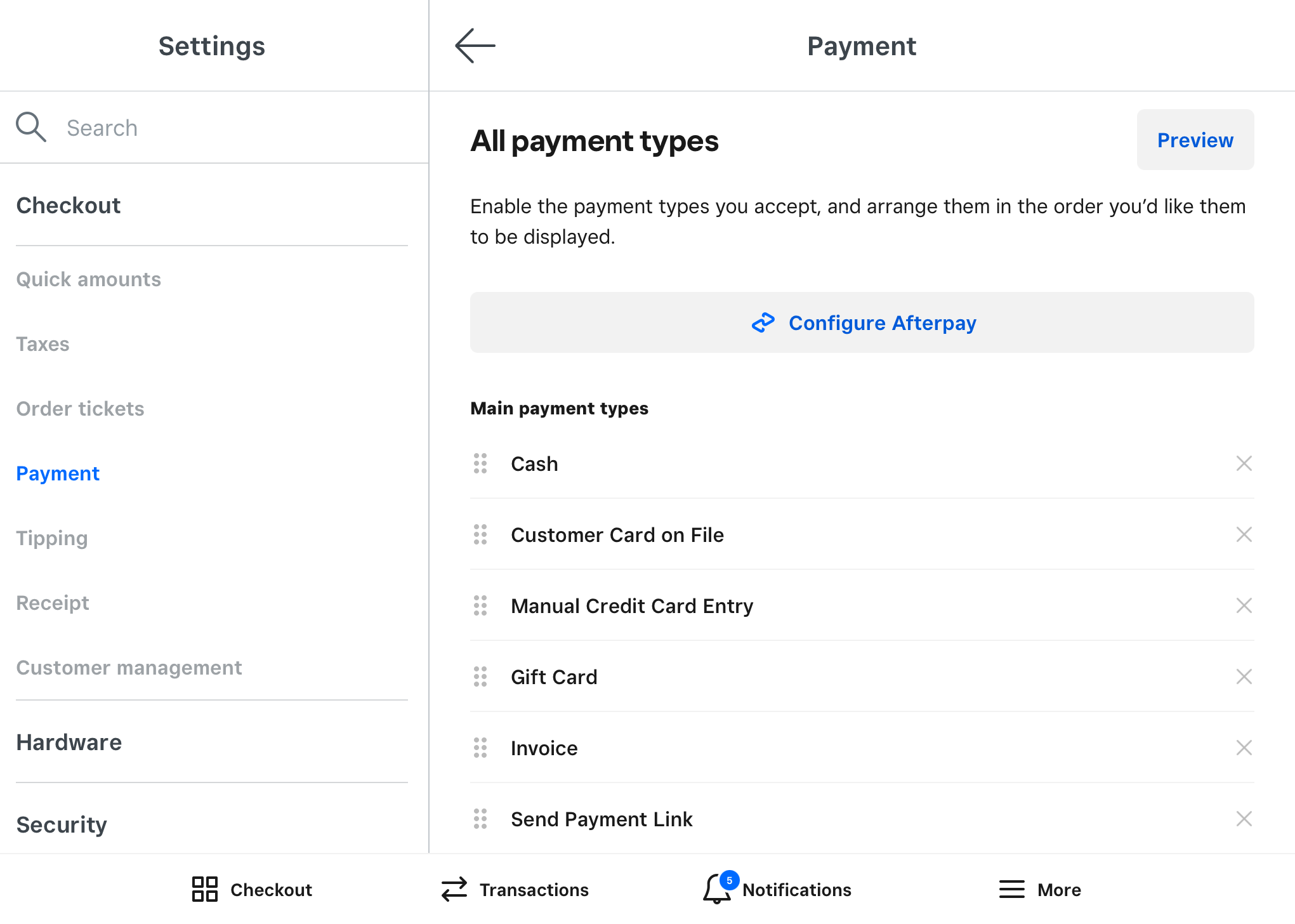Introduction
Welcome to the world of banking, where financial transactions happen every second of the day. The banking industry has evolved over time, incorporating innovative solutions to streamline processes and ensure seamless transactions. One such solution is the concept of conditional reversal.
Conditional reversal is a term that often comes up in banking discussions, especially when it comes to handling disputed transactions. It is a process that allows banks to reverse a transaction, subject to certain conditions being met. This mechanism aims to protect both the customer and the bank from potential fraudulent activities or errors.
As technology has advanced and online banking has become more prevalent, the need for a system like conditional reversal has become even more crucial. With the increase in digital transactions, the possibility of mistakes or fraudulent activities has also risen. In such cases, conditional reversal provides an effective way for banks to rectify the situation.
In this article, we will explore the concept of conditional reversal in banking, how it works, its benefits, and its importance in the industry. We will also discuss the key differences between conditional reversal and regular reversal, as well as the factors to consider when implementing this mechanism. To better understand this concept, we will also provide real-life examples of conditional reversal in the banking sector.
So, whether you are a customer curious about the inner workings of your bank or a banking professional looking to enhance your knowledge, let’s dive into the world of conditional reversal and its significance in the banking industry.
Definition of Conditional Reversal
Conditional reversal, in the context of banking, refers to the process of reversing a transaction that has taken place between a customer and a bank, but with certain conditions attached. It is a mechanism designed to provide flexibility and protection for both parties involved in the transaction.
When a customer initiates a transaction, such as a purchase or a transfer of funds, it is usually irreversible. However, in cases where there is a dispute or an error, conditional reversal allows the bank to reverse the transaction under specific circumstances.
For a conditional reversal to take place, certain conditions must be met. These conditions may vary depending on the specific policies and procedures of the bank. Common conditions for a conditional reversal may include:
- The customer reporting the transaction as unauthorized or fraudulent within a specified timeframe
- Providing proper documentation and evidence to support the claim
- The transaction falling within a certain monetary threshold
- The transaction not being a recurring or subscription-based payment
Once the customer meets these conditions, the bank can initiate the process of reversing the transaction. This typically involves debiting the amount from the recipient’s account and crediting it back to the customer’s account.
It’s important to note that conditional reversal is not a blanket solution for all types of transactions. Certain transactions, such as cash withdrawals from ATMs or payments made through third-party platforms, may have different rules and limitations regarding reversals.
The concept of conditional reversal provides a crucial safety net for both customers and banks alike. It allows customers to have peace of mind knowing that if they encounter any unauthorized or fraudulent activity, there is a mechanism in place to rectify the situation. At the same time, it enables banks to protect themselves from potential losses caused by fraudulent activities or errors.
In the following sections, we will explore how conditional reversal works in practice, its benefits, and why it holds immense importance in the banking sector.
How does Conditional Reversal work?
Conditional reversal is a process that involves several steps to ensure an effective and secure way of reversing a transaction. Let’s take a closer look at how this mechanism works in practice:
1. Customer Disputes a Transaction: The first step in the conditional reversal process is when a customer identifies a transaction that they believe to be unauthorized, fraudulent, or in error. The customer must promptly report the disputed transaction to their bank, providing details and any supporting documentation.
2. Review and Investigation: Upon receiving the dispute, the bank’s fraud and dispute resolution team will initiate a review and investigation. They will gather information and evidence from both the customer and the recipient of the transaction to determine the validity of the claim.
3. Conditions for Reversal: Based on the bank’s policies, the investigation team will assess if the disputed transaction meets the conditions for a conditional reversal. These conditions may include the timeframe for reporting, the nature of the transaction, the validity of the claim, and any other relevant factors.
4. Reversal Process: If the disputed transaction meets the conditions, the bank will proceed with the reversal process. This typically involves debiting the amount from the recipient’s account and crediting it back to the customer’s account.
5. Communication with the Customer: Throughout the process, the bank will keep the customer informed about the progress of the dispute resolution and reversal. They will provide updates on the investigation, any additional information required, and the final decision regarding the reversal.
6. Resolution and Monitoring: Once the reversal is completed, the bank will monitor the customer’s account to ensure that the reversed amount reflects correctly. They will also continue to monitor for any further suspicious or fraudulent activities to provide a safe banking experience.
It is important to note that the process and specific steps may vary depending on the individual bank’s policies and procedures. The timeframe for completion of the reversal process can also vary, ranging from a few days to several weeks, depending on the complexity of the dispute and investigation.
Conditional reversal serves as a safeguard for customers by providing them with the opportunity to rectify unauthorized or erroneous transactions. It also allows banks to mitigate the risk of financial loss and maintain customer trust.
In the next section, we will explore the benefits of conditional reversal in more detail to understand its significance in the banking industry.
Benefits of Conditional Reversal
Conditional reversal offers numerous benefits to both customers and banks in the banking industry. Let’s take a closer look at some of these advantages:
1. Customer Protection: One of the primary benefits of conditional reversal is that it provides a layer of protection for customers. In cases of unauthorized transactions or fraudulent activities, customers can report and reverse the transaction, preventing financial loss and maintaining the integrity of their accounts.
2. Error Correction: Conditional reversal also serves as an effective mechanism for correcting errors in transactions. If a customer notices an error, such as an incorrect amount or an unintended recipient, they can initiate the reversal process to rectify the mistake and ensure that the transaction reflects their intended actions.
3. Increased Trust and Customer Satisfaction: By offering conditional reversal, banks demonstrate their commitment to customer protection and satisfaction. This helps build trust and confidence among customers, knowing that their financial institution has procedures in place to address any issues or disputes that may arise during the transaction process.
4. Fraud Prevention: Conditional reversal acts as a deterrent for fraudulent activities in banking. The potential for reversals encourages individuals to think twice before engaging in fraudulent practices, as they are more likely to face consequences and have the transactions reversed if they are caught.
5. Streamlined Dispute Resolution: Conditional reversal provides a structured and standardized process for handling disputed transactions. This helps banks efficiently address customer concerns and resolve disputes in a timely manner, improving overall customer experience and reducing the time and effort required to resolve such issues.
6. Financial Loss Mitigation: For banks, conditional reversal helps mitigate potential financial losses caused by fraudulent activities or errors. By facilitating the reversal of unauthorized or erroneous transactions, banks can limit the impact on their revenue and maintain financial stability.
7. Regulatory Compliance: Many jurisdictions require banks to have procedures in place for addressing disputed transactions. Implementing conditional reversal ensures that banks are compliant with regulatory requirements and helps them avoid penalties or legal consequences.
Overall, conditional reversal plays a vital role in protecting customers, preventing fraud, and maintaining trust within the banking industry. By offering a secure and efficient process for handling disputed transactions, banks can enhance customer satisfaction and maintain a strong reputation in the market.
In the next section, we will explore the importance of conditional reversal in the banking sector and its impact on the overall financial ecosystem.
Importance of Conditional Reversal in Banking
Conditional reversal holds immense importance in the banking sector due to its impact on customer confidence, financial stability, and fraud prevention. Let’s explore why conditional reversal is crucial in the banking industry:
1. Customer Trust and Confidence: Conditional reversal is a crucial mechanism that helps build and maintain trust among customers. Knowing that their bank has a process in place to handle disputed transactions and protect them from unauthorized activities enhances customer confidence in the banking system. This trust is essential for fostering long-term customer relationships and attracting new customers to the bank.
2. Financial Stability: Conditional reversal helps banks maintain financial stability by preventing and mitigating losses caused by fraudulent transactions or errors. Timely detection and reversal of unauthorized activities safeguard the bank’s assets and maintain its financial integrity. This is especially important in today’s digital landscape, where digital transactions are susceptible to various forms of fraud and security breaches.
3. Compliance with Regulations: Many regulatory frameworks require banks to have procedures in place for handling disputed transactions. Conditional reversal ensures that banks meet these regulatory requirements and remain in compliance with industry standards. This compliance not only helps avoid legal consequences but also demonstrates the bank’s commitment to uphold ethical and transparent practices.
4. Fraud Prevention and Deterrence: Conditional reversal acts as a deterrent for fraudulent activities in banking. The possibility of a transaction being reversed serves as a warning to potential fraudsters that their actions will not go unnoticed. This discourages individuals from attempting fraudulent activities, thereby reducing the overall occurrence of financial fraud within the banking system.
5. Efficient Dispute Resolution: Conditional reversal streamlines the process of resolving disputes related to transactions. It provides a structured framework for banks to investigate and address customer concerns promptly and efficiently. This helps prevent prolonged disputes, enhances customer satisfaction, and reduces the administrative burden on both the bank and the customer.
6. Protection Against Errors: Mistakes happen, and errors in financial transactions can occur due to various reasons. Conditional reversal provides an avenue for rectifying these errors and ensuring that the transactions align with the customer’s intentions. This protects both the customer and the bank from unintended financial consequences and maintains the accuracy of the financial records.
In summary, conditional reversal is of utmost importance in the banking industry. By safeguarding customer interests, preserving financial stability, ensuring compliance, and deterring fraudulent activities, conditional reversal contributes to the overall trust, security, and efficiency of the banking ecosystem.
Next, we will discuss the key differences between conditional reversal and regular reversal in the banking context.
Conditional Reversal vs Regular Reversal
Conditional reversal and regular reversal are two distinct processes used in the banking industry to handle different types of transactions. Let’s examine the key differences between these two concepts:
1. Reversibility: Regular reversal refers to the ability to reverse any transaction, without any specific conditions being met. It allows banks to undo a transaction at the request of the customer or in certain predefined situations. On the other hand, conditional reversal only allows for the reversal of transactions when certain conditions are met. These conditions typically revolve around fraud, error, or disputed transaction scenarios.
2. Purpose: Regular reversal is often used for transactions that are reversible by default, such as duplicated payments, incorrect transfers, or canceled orders. It is a general mechanism that covers a wide range of transaction types. Conditional reversal, on the other hand, is specifically designed for situations where additional conditions need to be met before a transaction can be reversed. It is primarily aimed at addressing unauthorized or fraudulent transactions and resolving customer disputes.
3. Documentation and Evidence: Regular reversal may not require extensive documentation or evidence beyond the customer’s request for the reversal. In contrast, conditional reversal typically requires the customer to provide supporting documentation and evidence to demonstrate the validity of their claim. This additional documentation helps the bank assess whether the conditions for reversal are met and aids in the investigation process.
4. Timeframe: Regular reversal can often be initiated within a specific timeframe after the transaction takes place, as defined by the bank’s policies. It allows for a relatively shorter window for requesting a reversal. In contrast, conditional reversal may have a different timeframe for reporting the disputed transaction and initiating the reversal process, as defined by the specific conditions set by the bank. This timeframe may take into account factors such as fraud reporting regulations and the complexity of the investigation process.
5. Fraud and Dispute Resolution Process: Both regular reversal and conditional reversal involve a fraud and dispute resolution process, but conditional reversal tends to have a more structured and defined process. The investigation for conditional reversal usually involves gathering evidence, analyzing documentation, and assessing the validity of the customer’s claim before proceeding with the reversal. Regular reversal, however, may have a simpler resolution process without the need for extensive investigation, especially for straightforward cases.
6. Frequency and Limitations: Regular reversal may have limitations on the frequency or number of times a customer can initiate a reversal within a specific time period. These limitations help prevent abuse or misuse of the reversal process. Conditional reversal, on the other hand, is often subject to specific conditions related to the transaction type, the monetary value, or the nature of the dispute. These conditions are set to ensure that the reversal process is fair, transparent, and aligned with the bank’s policies.
Understanding the differences between conditional reversal and regular reversal is essential for banks to ensure the appropriate handling of different types of transactions and provide the necessary protection and resolution processes for their customers.
In the following section, we will explore the factors that banks consider when implementing conditional reversal in their operations.
Factors to Consider in Conditional Reversal
When implementing conditional reversal in banking operations, several factors need to be carefully considered to ensure an effective and secure process. Let’s explore these key factors:
1. Policy and Procedure Development: Banks need to develop clear policies and procedures for conditional reversal. This includes defining the conditions under which a reversal can occur, the necessary documentation and evidence required for a valid claim, and the timeframe for reporting disputed transactions. Well-defined policies provide clarity both to customers and bank employees and ensure consistent and fair application of the reversal process.
2. Risk Assessment: Banks must conduct a comprehensive risk assessment to evaluate potential risks associated with conditional reversal. This includes assessing the impact of reversals on the bank’s financial stability, operational efficiency, and fraud prevention measures. By identifying potential risks, banks can implement appropriate safeguards and controls to mitigate these risks effectively.
3. Fraud Detection and Prevention: Effective fraud detection and prevention mechanisms are crucial in conditional reversal. Banks need to establish robust systems and processes to detect potential fraudulent activities, including transaction monitoring, identity verification, and anomaly detection. By incorporating these measures, banks can minimize the occurrence of fraudulent transactions and ensure that the reversal process is being used for legitimate claims.
4. Customer Communication and Education: Clear and transparent communication with customers is essential when it comes to conditional reversal. Banks need to educate their customers about the process, the conditions for reversal, and the necessary steps to report disputed transactions. Providing clear instructions, guidelines, and accessible customer support channels can help customers understand their rights and responsibilities in the reversal process.
5. Technology and Infrastructure: A robust technological infrastructure is crucial for efficient implementation of conditional reversal. Banks need to ensure that their systems and platforms are capable of handling the reversal process accurately and securely. This includes integrating fraud detection tools, establishing secure communication channels, and implementing reliable data storage and retrieval systems.
6. Compliance with Regulatory Requirements: Banks must consider the regulatory landscape when implementing conditional reversal. Different jurisdictions may have varying regulatory requirements for handling disputed transactions, fraud reporting, and customer protections. Banks need to align their policies and procedures with these regulations, ensuring full compliance to avoid legal and reputational risks.
7. Continuous Monitoring and Improvement: Conditional reversal processes should be subject to regular monitoring and evaluation to identify areas for improvement. Banks should track the effectiveness of their reversal procedures, assess customer satisfaction levels, and analyze the outcome of investigations. This feedback helps identify potential enhancements, addresses weaknesses, and ensures that the conditional reversal process remains efficient and customer-centric.
By considering these factors, banks can implement conditional reversal processes that are secure, transparent, and aligned with customer needs and industry best practices.
In the next section, we will explore real-life examples of conditional reversal in the banking sector to provide practical insights into its application.
Examples of Conditional Reversal in Banking
Conditional reversal is a significant component of the banking industry and is utilized in various scenarios to protect customers and rectify transactional disputes. Here are a few real-life examples of how conditional reversal is applied in banking:
1. Unauthorized Card Transactions: If a customer notices unauthorized transactions on their credit or debit card, they can report the transactions to their bank. The bank will investigate the claim and, if verified as unauthorized, initiate a conditional reversal to reimburse the customer for the fraudulent charges.
2. Billing Errors: In cases where customers receive a bill with incorrect charges or overbilling, they can dispute the charges with their bank. The bank will investigate the dispute and, if found valid, initiate a conditional reversal to correct the error on the customer’s account.
3. Purchase Disputes: If a customer makes a purchase and receives a faulty or misrepresented product, they can contact their bank to dispute the transaction. After an investigation, if the claim is deemed valid, the bank may reverse the transaction and provide a refund to the customer.
4. Subscription Cancellations: When a customer attempts to cancel a subscription but continues to be charged, they can report the issue to their bank. If the bank determines that the customer followed the cancellation procedure correctly, a conditional reversal may be initiated to refund the unauthorized charges.
5. ATM Transaction Errors: If an ATM malfunctions and dispenses an incorrect amount of cash or fails to dispense cash altogether, customers can report the issue to their bank. Upon investigation, the bank may initiate a conditional reversal to either reimburse the customer for the incorrect amount or credit the amount that was not dispensed back into their account.
6. Online Payment Disputes: In cases where customers make online payments for goods or services that are not delivered as promised, they can dispute the transaction with their bank. If the bank finds the claim to be valid, they may initiate a conditional reversal to reverse the payment and return the funds to the customer’s account.
These are just a few examples of how banks employ conditional reversal to address customer concerns and protect their interests. The specific conditions, procedures, and timeframes for each reversal may vary depending on the policies and regulations of the individual bank.
It is important for customers to promptly report any unauthorized or disputed transactions to their bank and provide the necessary documentation to support their claim. This enables banks to initiate the investigation process and determine if the conditions for a conditional reversal are met.
In the next section, we will conclude our exploration of conditional reversal in banking by summarizing the key points discussed.
Conclusion
Conditional reversal plays a vital role in the banking industry, providing a mechanism to protect customers and address transactional disputes. Through this process, banks can reverse transactions under specific conditions, helping to rectify errors, prevent fraud, and maintain customer trust and satisfaction.
We explored the definition of conditional reversal, understanding how it differs from regular reversal. We discussed the importance of conditional reversal in banking, including its role in customer protection, fraud prevention, and financial stability. Factors such as policy development, risk assessment, customer communication, and technology infrastructure were highlighted as key considerations when implementing conditional reversal.
By providing real-life examples, we demonstrated how conditional reversal is applied in various scenarios, such as unauthorized card transactions, billing errors, purchase disputes, subscription cancellations, ATM transaction errors, and online payment disputes. These examples exemplify the practical application of conditional reversal in addressing customer concerns and ensuring fair and secure financial transactions.
Conditional reversal serves as a vital tool not only for banks but also for customers, helping to maintain trust, enhance customer satisfaction, and protect against unauthorized activities. The process enables efficient dispute resolution and promotes transparency and compliance with regulatory requirements.
In conclusion, conditional reversal is an integral part of the banking industry, contributing to the overall integrity and security of financial transactions. By understanding its significance and implementing effective processes, banks can demonstrate their commitment to customer protection and work towards maintaining a strong and trusted position in the market.
Thank you for joining us on this exploration of conditional reversal in banking. We hope this article has provided valuable insights into this important mechanism.

























